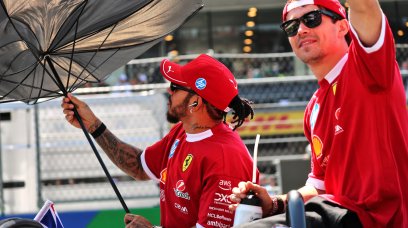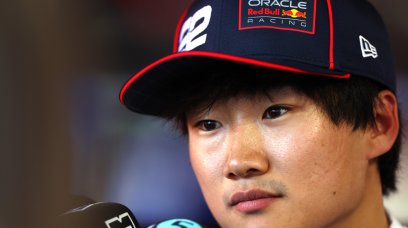Formula 1 has been operating a handicap system since the 2022 season on aero testing, where the most successful teams are disadvantaged in the development of their cars outside race weekends.
Known as the Aerodynamic Test Restrictions (ATRs), F1 teams are restricted to less time in their wind tunnels and using Computational Fluid Dynamics (CFD).
This means they are forced to develop their cars at a slower pace than teams lower down in the championship. The hope is that it will lead to greater competition on track, as those at the back will have more time to develop their car.
As part of the ATR rules, during six periods of eight weeks in one year, first in the Constructors' Championship is only allowed to run only 70% of the number of wind tunnel hours and perform 70% of the number of simulations.
By contrast, the team sitting tenth in the standings may run 115% of the number of established runs and perform simulations. Per ATR period, 320 runs and 2,000 simulations is the base number of 100%.
This means that first may only make 224 runs and run 1,400 simulations, while tenth is allowed 368 runs per period and 2,300 simulations.
Red Bull remains the same, yet also not the same
As of 1st January, the new distribution took effect. This is reviewed at least twice a year based on the championship standings; on December 31 and June 30.
In the following six months the teams are allowed to spend X number of hours in the wind tunnel or perform X number of simulations. If you perform well on track, you are penalised because you are allowed fewer hours.
For the distribution as of 1st January, only the final standings of the Constructors' Championship in 2023 are looked at, not the number of points. As champions, Red Bull is allowed the fewest runs at 70%.
Until the end of October last year it was 63% because Red Bull still had to serve a penalty for exceeding the budget cap in 2021, so this is an improvement on their recent allowance.
McLaren and Ferrari 'penalized', Aston Martin benefits
Aside from Red Bull, Mercedes and Alpine remain at the same level compared to the previous six months, but a number of competitors are moving either up or down.
Among the top teams, McLaren and Ferrari take a step forward at the expense of Aston Martin. Fernando Alonso's team got off to a rock-solid start in 2023, but dropped back in the last six months. This is reflected in the table below.
The same goes for Haas and Alfa Romeo, as they too dropped two places back, but it does mean a nice number of extra hours in the wind tunnel.
For their part, the midfield teams suffering the negative consequences of their 'success' are AlphaTauri and Williams having moved up two spots in the last six months.
Check below the poll for the new distribution (as of January 1st 2024). What do you think of these F1 rules?
New distribution wind tunnel time and simulations
| Number | Team (change from previous measurement point) | Percentage |
|---|---|---|
| 1 | Red Bull (same) | 70% |
| 2 | Mercedes (equal) | 75% |
| 3 | Ferrari (+1) | 80% |
| 4 | McLaren (+1) | 85% |
| 5 | Aston Martin (-2) | 90% |
| 6 | Alpine (even) | 95% |
| 7 | Williams (+2) | 100% |
| 8 | AlphaTauri (+2) | 105% |
| 9 | Alfa Romeo (-2) | 110% |
| 10 | Haas (-2) | 115% |
Don't miss out on any of the Formula 1 action thanks to this handy 2026 F1 calendar that can be easily loaded into your smartphone or PC.
Download the calenderMost read
In this article











Join the conversation!